Your home design is more than just aesthetic and visually appealing aspects. It is evident that your surroundings can significantly affect both mental and physical health. Any minor or major decision you make about your interior design can directly affect your mental state positively or negatively. The space you spend most of your time in can influence your energy level, mood, mindset, and overall quality of lifestyle. That is why a good space design brings enormous potential, and maintaining the design principles is necessary. When you know the psychology of space, you can transform your interior into unique sanctuaries of tranquility and harmony. You can combine design elements strategically to improve your well-being. Keep reading this blog to learn more about space psychology and how it affects your feelings at home.
What Are the Key Design Elements to Improve Your Mental Health?
Some design considerations are based on psychologists’ explanations. You need to understand each element if you want to buy a new house or redesign your home.
Color
Your choice of color can significantly affect the vibe of your interior space. It is one of the most critical design principles, and there are proven records of the impact of color on mental state. Choosing the right color in each area of your home can enhance emotional balance and harmony. It impacts your mood daily, so you need to comprehend the theory of colors and their psychological effects on your mental state. Designers usually recommend personalizing your space color scheme to enhance well-being and make your place feel more like home.
- Soft pastels are usually used in bedrooms to promote a sense of comfort and relaxation.
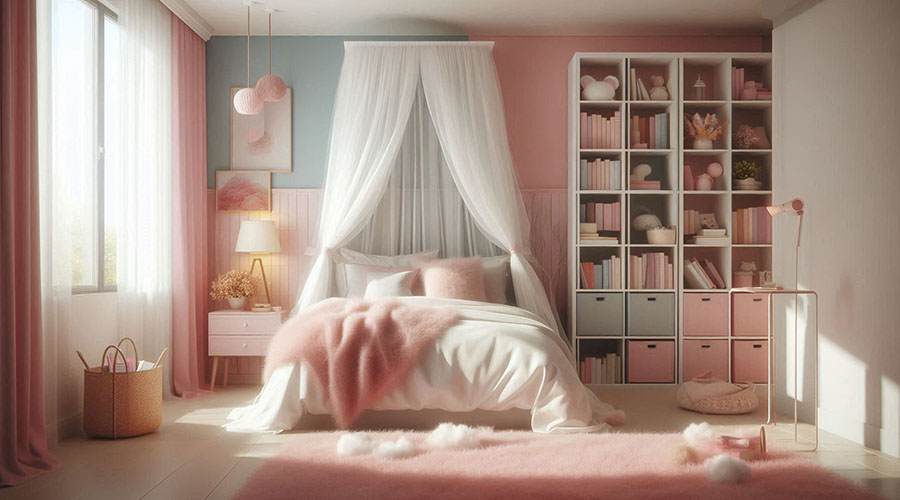
- Vibrant and bold colors are used in spaces with a sense of creativity and inspiration.
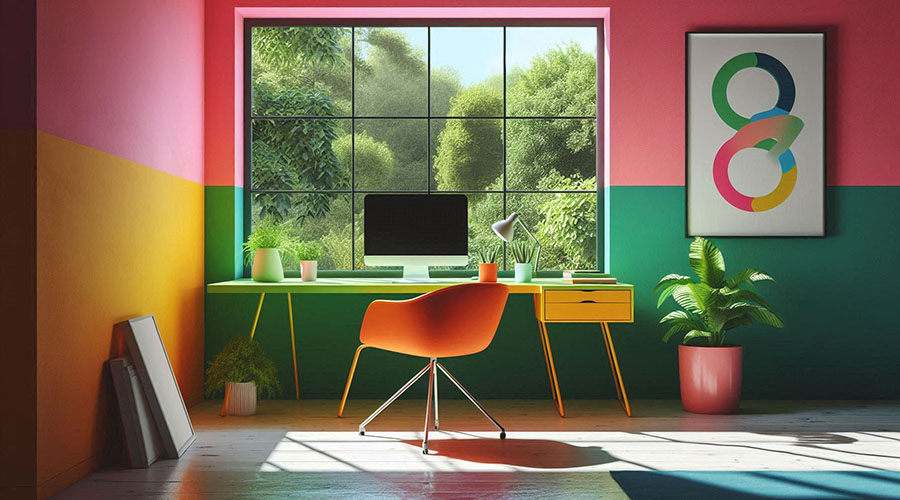
- Blue and green colors make you feel calmer, while colors like yellow can give you more energy and passion.
Lighting
Psychologists emphasize the importance of natural light and layering on the individual’s mental state. Whether natural or artificial, light sources can bring life into your space and improve your overall mood. The important thing is your designer’s knowledge of how to utilize each source in the right place after analyzing your interior. A professional lighting setup offers a connection with the outside of the house, which is why it can boost your mental well-being when you are inside.
- You can choose sheer curtains or avoid using this decorative element to let more light come in.
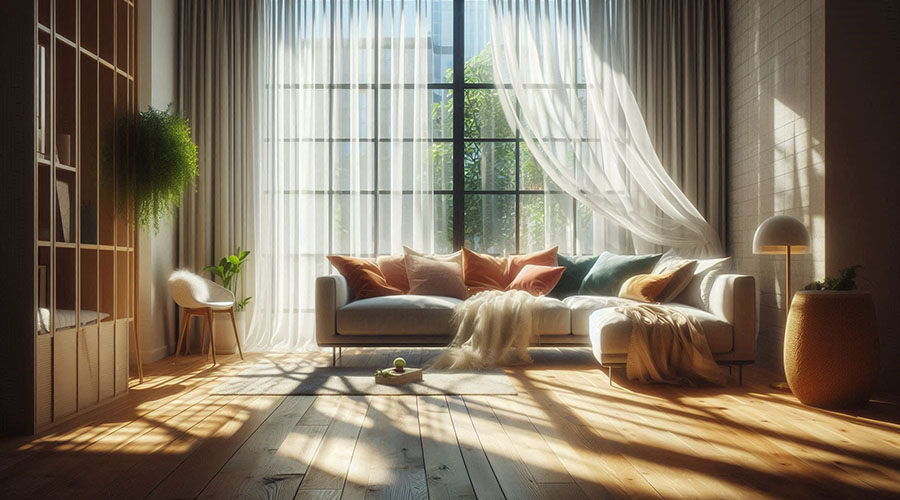
- You can use mirrors strategically to lighten even the darkest spaces; all you need to do is find the right location for the mirror.
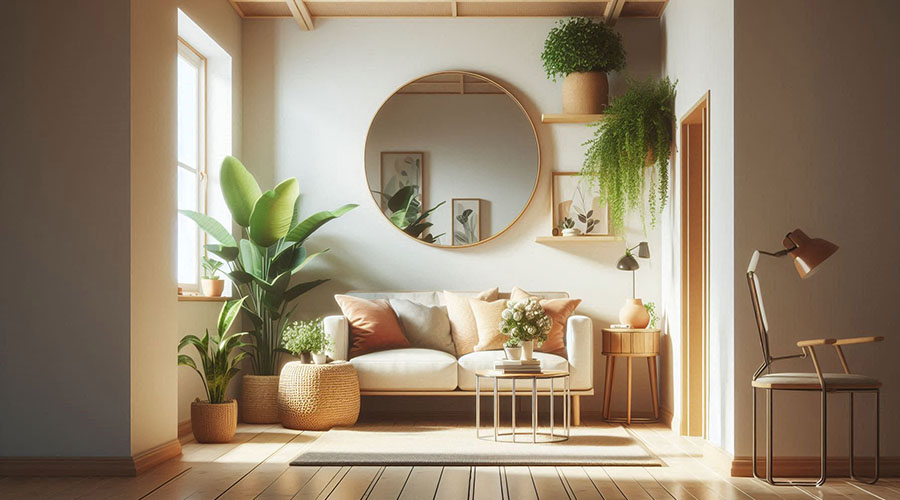
- A door with one or more windows can lighten the hallway.

- Try to choose light colors for your rug, furniture, and other interior elements.
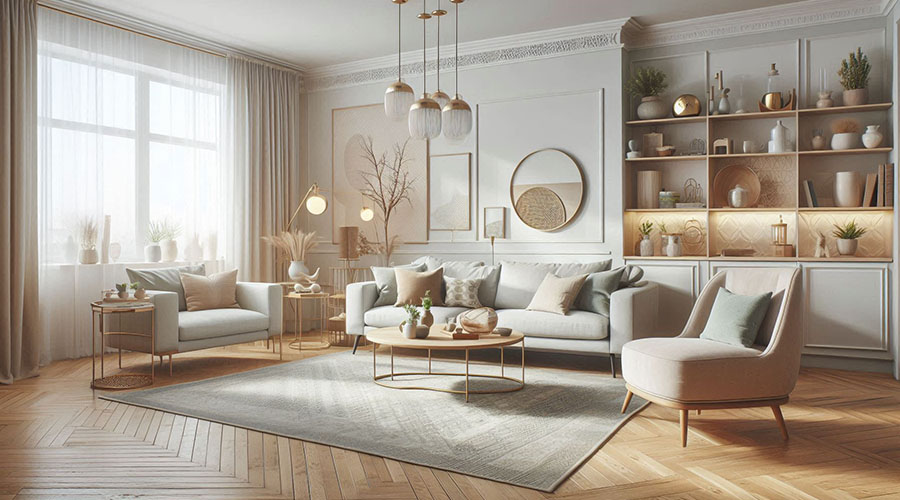
Texture and Materials
Texture is a subtle communicator in interior design. You need to choose the materials of your design elements carefully because each texture can give you a different feeling.
- Soft fabrics are used where you want to have a sense of relaxation and coziness.
- Cold and classy fabrics are a good option when you are looking for a sense of formality.
- If you seek something more dynamic to make your environment emotionally rich, you can combine different textures and materials correctly.
Furniture
When decorating your space, you need to apply design principles. The right type of furniture should be chosen depending on the size of the area, your personal preferences, and your budget.
- If you want something to sit on to rest, talk to your family, or watch the TV, you should go for cozy furniture. It encourages relaxation and social interaction.
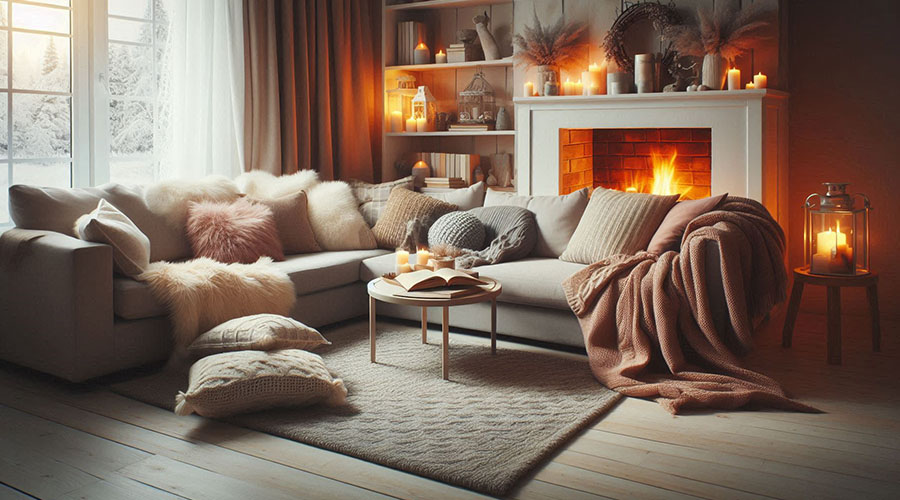
- You should go for something more formal if you usually serve many guests.
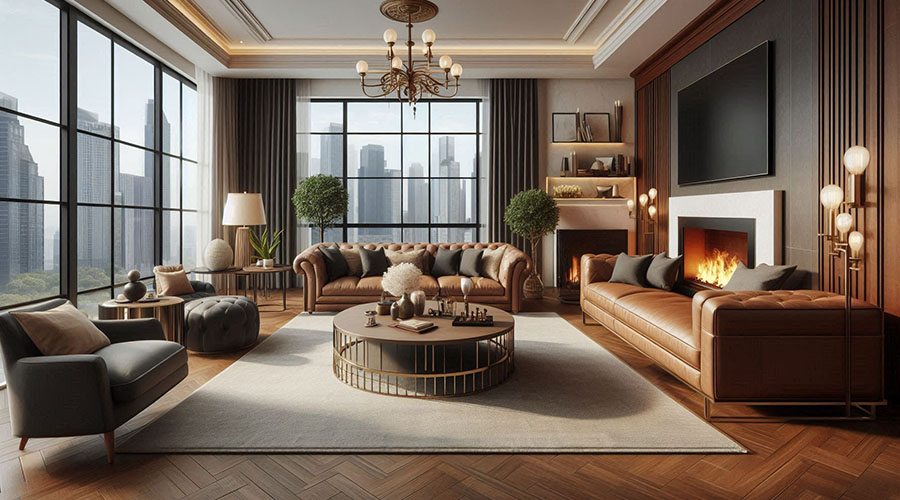
Layout and Area
The way you arrange design elements in your space should be strategic. You can not do this without having a specific plan. The correct layout can also facilitate movement and interaction, which can impact your feelings.
- If you want to free your creativity, keep your space open and avoid filling it with many design elements.
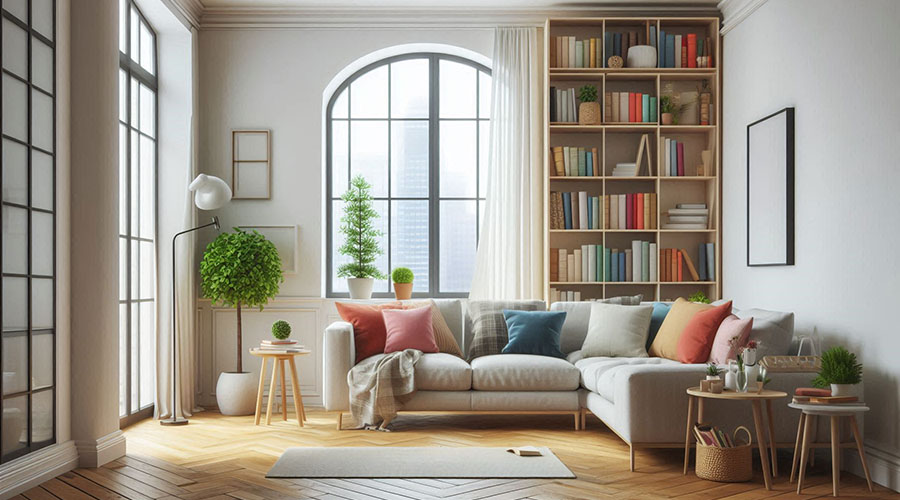
- On the other hand, cluttered, cramped areas may give you anxiety and stress, especially if you are a sensitive person.
Personal Touch
You can tell your own story in some parts of your home design. Personal photos, artwork, or heirlooms can add a sense of personalization and calm your mind down when you spend time there. Your design choice can reflect your personal values, and you will feel more connected to the area.
Nature Impact
Humans are internally connected to nature, and it improves mental well-being. Plants, water features, or natural light can create a calming and restorative environment.
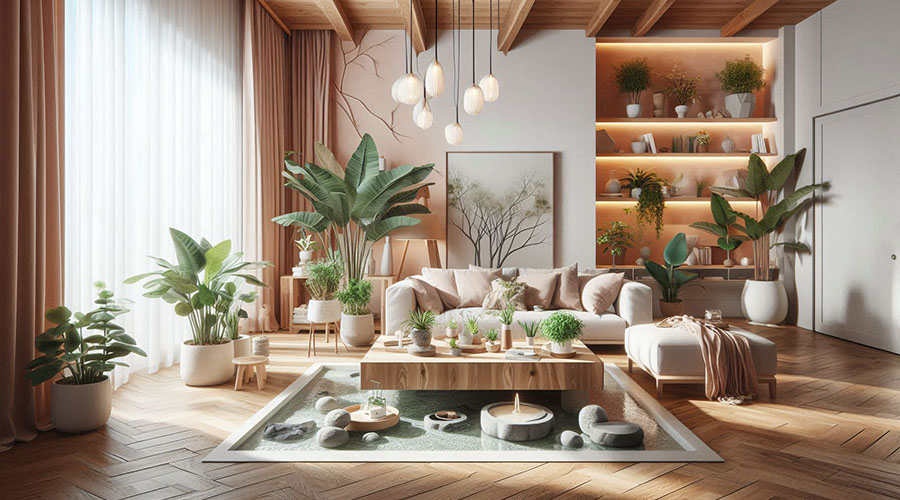
How Can You Add an Emotion to Interior Design?
Each interior space can capture an emotion. If you want to reflect a specific feeling in your space, there are some tips to follow.
- Comfort: The master bedroom and other bedrooms should be comfortable enough for a good sleep at night. Warm textured fabrics, roman shades, and rich colors.
- Safety: If you have a child or pet at home, you need to create a sense of security. For instance, you need to customize the windows to make them as safe as possible.
- Happiness: Textured fabric and dark blue accents are an ideal combination to offer a friendly sense. It is the first gathering place in the home, and you need to make it as welcoming as possible.
- Pride: The formal living room and dining room are critical places to influence individuals entering your home for the first time. Elegance is the key to creating a sense of pride. This way, you can impact your guests, especially if you invite them to discuss business.
- Romance: The fabrics used in a room should be soft, touchable, and have some drape or flow. The slightest details about the room can make it more relaxing and comfortable. You need a focal point to emphasize the romance part, such as the bed, in addition to a decorative headboard, photos, paintings, or an accent wall.
Final Thoughts
Understanding the psychological aspects of interior design can change the game. You can transform your area the way it is tailored to your character and feel mentally calm and relaxed. When the interior design matches your feelings, you can improve your emotions and focus better on your work. It boosts your productivity, and you enjoy every second with your loved ones in your home!


